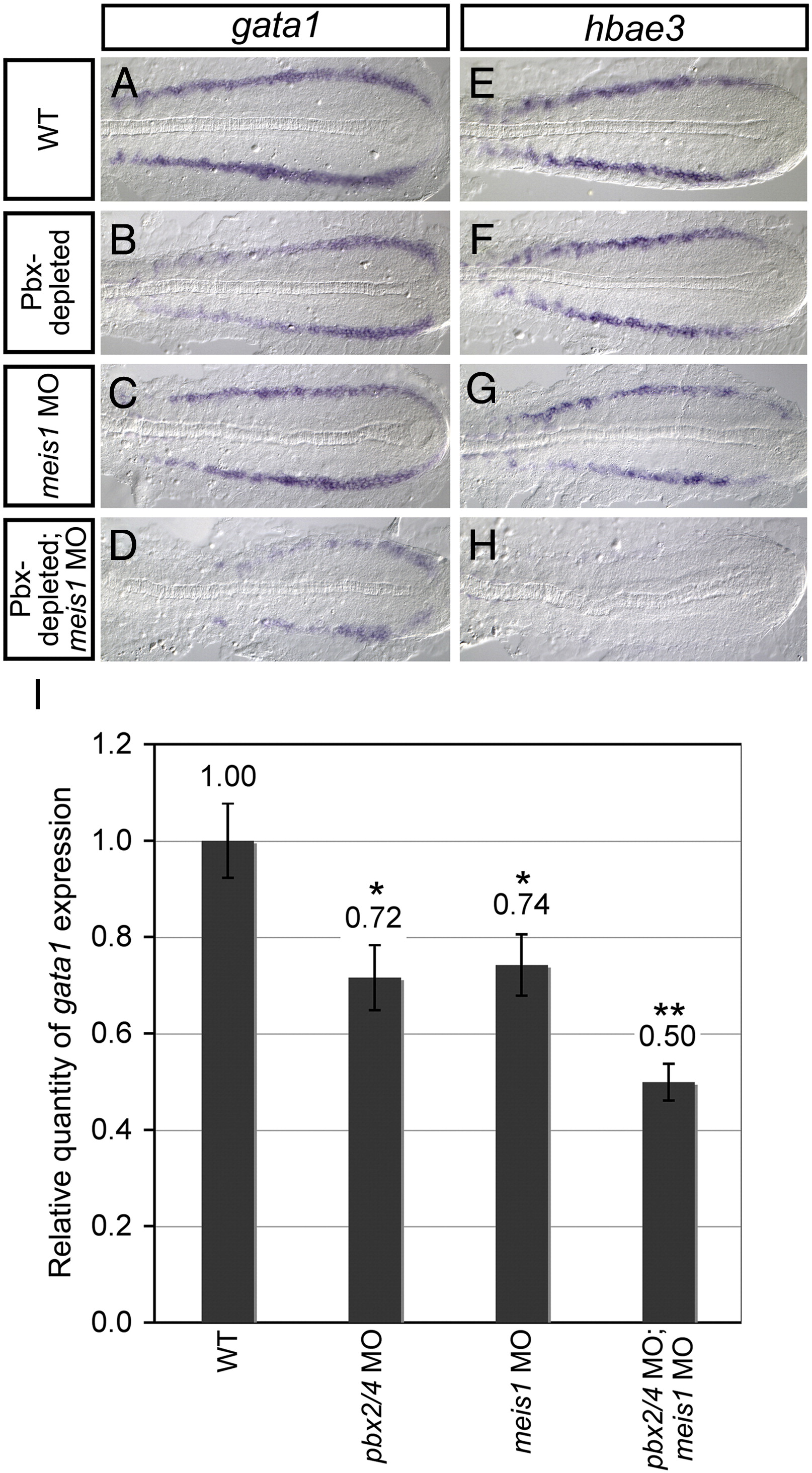Fig. 4 Pbx and Meis1 act in a cooperative fashion to regulate erythroid gene expression. (A–H) Shown are representative embryos following in situ hybridization analysis of gata1 (A–D) and hbae3 (E–H) expression in 16 hpf embryos. Embryos shown are deyolked and flat-mounted with a dorsal view of gene expression in the PLM and anterior oriented to the left. Embryos partially depleted of Pbx (injected with 4.5 ng of pbx2/4 MO) exhibit subtle decreases in gata1 (B; 83%, n = 18) and hbae3 (F; 71%, n = 7) expression. Embryos partially depleted of Meis1 (injected with 2 ng of meis1 MO) exhibit subtle decreases in gata1 (C; 85%, n = 20) and hbae3 (G; 100%, n = 6) expression. Embryos partially depleted of both Pbx and Meis1 exhibit profoundly reduced gata1 (D; 90%, n = 29) and hbae3 (H; 95%, n = 19) expression. (I) Quantitative real-time PCR analysis of gata1 expression in 16 hpf wild type embryos (WT), lzr/pbx4+/- incross progeny injected with a full dose of pbx2/4 MO (pbx2/4 MO), meis1-morphant embryos (meis1 MO), and lzr/pbx4+/- incross progeny injected with a full dose of both pbx2/4 MO and meis1 MO (pbx2/4 MO; meis1 MO). Shown is the relative quantity of gata1 expression. Samples were normalized to ef1a and WT was set to 1. Error bars indicate standard deviation from the mean. *Indicates the difference compared with WT is significant by Student t test, P < 0.0001. **Indicates the difference compared with all other samples is significant by Student t test, P < 0.0001.
Reprinted from Developmental Biology, 340(2), Pillay, L.M., Forrester, A.M., Erickson, T., Berman, J.N., and Waskiewicz, A.J., The Hox cofactors Meis1 and Pbx act upstream of gata1 to regulate primitive hematopoiesis, 306-317, Copyright (2010) with permission from Elsevier. Full text @ Dev. Biol.

